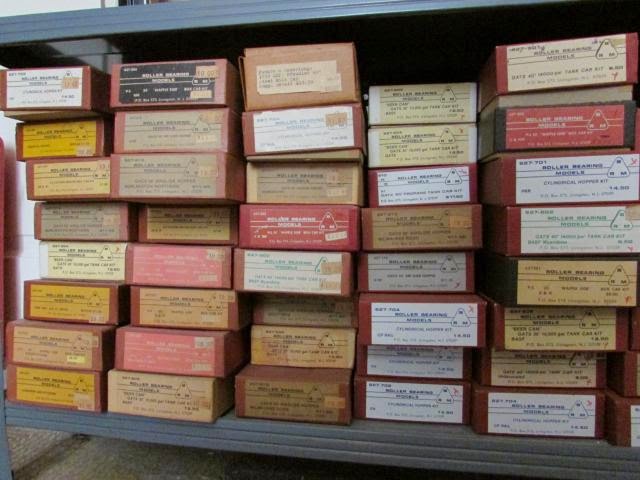 |
| Zientek's Model Trains |
Like many people, I have a bucket list—things I want to see or do before I "kick the bucket."
Model railroad-wise, my bucket list includes visiting some signature model railroads like the San Diego Model Railroad Museum and the Greeley, CO Freight Station Museum. (among others).
With my daughter living in Chicago for the past year, I had a reason to go to that city more often. It allowed me to scratch two things off my list: The Great Train Story at the Chicago Museum of Science and Industry and Zientek's Model Trains and Tavern.
 |
| The bar is closed, unless you like to be served trains! |
Unfortunately, the tavern has been closed for three
years; the owner, John Zientek, found it too expensive and onerous to get and
pay for all the licenses and insurance. So, no cold ones for me!
The tavern was started by John’s grandfather in
1900 in the Chicago neighbourhood of Pilsen.
 |
| The sight that greets you when you enter the first of the second floor train rooms. |
Back then, Pilsen was predominantly a Czech and Slovak area; today it is largely Mexican and Hispanic, featuring a lively cultural and food scene.
John’s father took over the tavern, also selling tobacco products. In 1973,
John began helping out; since he was a model railroader, they introduced trains in 1985 as a way to
diversify their offerings.
 |
| Looking from the turret window. |
Back then, it was beer on the first floor and trains on the second. Today, trains have taken over both floors.
Why was Zientek’s on my bucket list? Not just
because of the tavern-trains connection. It was on my list because it takes me back to the
way hobby shops used to be.
 |
| What are those things? Oh, yeah: Kits. |
You may remember those days, a time when
manufacturers made large numbers of model railroad items, and hobby shops bought
and stocked them. With today’s limited runs, those days are long gone.
But not a Zientek’s Model Trains! The store is
filled, top-to-bottom and wall-to-wall, with model railroad items. This includes many things that
have long been out of stock, or made by companies that are no longer in
business.
 |
| You want stock? Zientek's has stock! |
John also has a lot of items with a strange word on the box: “K-i-t.” Oh, yeah, “kit.” You don’t see many of those these days.
You name it, you can probably find it at Zientek’s
(in HO scale—he doesn’t have much in the way of other scales).
Not find them easily, mind you, but that’s part of the charm and fun. I spent a couple of enjoyable hours there searching through the shelves, never knowing what treasure I might find.
Not find them easily, mind you, but that’s part of the charm and fun. I spent a couple of enjoyable hours there searching through the shelves, never knowing what treasure I might find.
In addition to ages-old kits, John also stocks hard-to-find detail parts, decals, dry transfers and paint.
 |
| Need a detail part? |
Compared to many of today’s clean and orderly hobby shops, with maybe one or two of anything, Zientek’s is a throwback to another era.
Speaking of throwbacks, Zientek’s is also cash-only—no
credit cards. And he uses an ancient non-electric cash register to ring up your
sale.
 |
| John at the controls of his layout. |
John also has a layout in the basement. If you ask, he might take you downstairs to see it.
If you have a model railroad bucket list, I encourage you to add Zientek’s Model Trains to it. But don’t wait too long; John is now semi-retired, and may want to fully retire one of these days.
Zientek’s Model Trains is located at 2001 W 18th St,
Chicago. (On the corner of W. 18th and Damen.) Ph: 1.312.226.9720. It can easily be reached via the CTA Pink line.
 |
| There's newer stuff at Zientek's, too. |





























